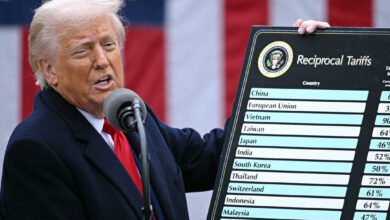
The Bitcoin ETF (ticker: BTCO) of Invesco has recently seen zero net inflows, a notable shift in the bitcoin market. Both institutional investors and traders actively monitor the success of such ETFs, as they are one of the well-known financial products that provide access to Bitcoin without the complexity of actually owning the asset. The lack of fresh inflows into BTCO raises concerns about the broader state of the Bitcoin ETF Market and investor sentiment.
Invesco Bitcoin ETF Struggles
Launched initially alongside the flood of spot Bitcoin ETFs in the United States, both retail and institutional investors first greeted Invesco’s ETF with considerable enthusiasm. These ETFs are designed to provide investors with a straightforward and controlled path to gain Bitcoin exposure, eliminating the need to manage wallets or secure private keys. The growing popularity of Bitcoin meant that these financial instruments were considered a means for more conventional investors who were reluctant to enter the Bitcoin markets to pass through.

Although initially hopeful, BTCO has struggled to gain significant traction. Zero net inflows suggest that investors’ taste for the fund has changed or that more general uncertainty in the bitcoin markets is reflected in the cooled demand. This signals a turning point in the ongoing discussion on the feasibility and appeal of Bitcoin, as well as other related products, which all signal signs of slow demand.
Bitcoin ETF Trends
The report of zero net inflows into Invesco’s Bitcoin ETF follows a series of similar patterns observed across various Bitcoin ETFs in recent months. A snapshot of the broader Bitcoin ETF landscape reveals a more cautious approach from investors. On March 7, 2025, for example, BTCO recorded a negative daily flow of $12.4 million, as Bitcoin’s price dipped by 2.1%. This correlating movement between the inflows of Bitcoin ETFs and Bitcoin’s price suggests that these funds have a significant impact on the broader market and may be one of the key indicators of institutional confidence.
Moreover, this trend is not an isolated event for Invesco. In August 2024, Bitcoin ETFs collectively saw a net outflow of $105 million, with six out of the 12 U.S. spot Bitcoin ETFs, including Invesco’s BTCO, failing to attract any new investments. These figures highlight the fact that the overall reception to Bitcoin ETFs has been less enthusiastic than initially anticipated. The lack of inflows suggests that investors may be reevaluating their positions in these products or favoring alternative methods of exposure to Bitcoin, such as direct purchases or other investment vehicles.
Bitcoin ETF Dynamics
The performance of Bitcoin ETFs—especially those of reputable asset management companies like Invesco—offers invaluable insights into institutional investor behavior for cryptocurrency traders. ETF flow statistics can indicate institutional attitudes because they connect the crypto and financial worlds. A notable absence of inflows into Bitcoin ETFs could suggest that institutional investors are either waiting and seeing, given the broader macroeconomic situation, or are unsure about Bitcoin’s price trend.
This wary attitude of institutional investors can directly influence the broader market interest in such financial products, which could point to issues regarding Bitcoin’s price volatility, regulatory uncertainty, or more general market instability, as Bitcoin ETFs are a popular choice among institutions seeking exposure to Bitcoin. These elements could cause more volatility in the price of Bitcoin and lead to greater price swings, which traders should consider as they formulate their strategy.
Interestingly, the outflows and inflows of Bitcoin ETFs also reveal the state of market sentiment regarding Bitcoin. Often, the influx of large amounts of money into these funds is viewed as a positive sign, as investors are betting on the long-term potential of Bitcoin. Conversely, times of outflows—such as the recent drop in inflows to Invesco’s ETF—may indicate mistrust or a temporary loss of market confidence.
Bitcoin ETF Trends
Knowing the flow of money into and out of Bitcoin ETFs is crucial for crypto traders’ market study. These flows provide real-time analysis of institutional investor posture regarding Bitcoin. As observed by Invesco’s Bitcoin ETF, a consistent lack of inflows could indicate caution, and traders might consider this a warning to modify their positions.

Moreover, traders who keep a close eye on ETF flows and look for trends or changes in institutional sentiment that may signal a turning point for Bitcoin. If inflows to Bitcoin ETFs start to show a notable increase, for example, it would suggest that institutions are growing more confident in the price projection of Bitcoin, which might set off a positive market trend. On the other hand, steady outflows or stagnant inflows indicate that investors are not yet fully ready to re-enter the market.
Furthermore, it is also essential to take into account the larger cryptocurrency market when analyzing ETF movements. As the biggest and most well-known cryptocurrency, Bitcoin usually serves as an indicator for the rest of the market. Consequently, movements in Bitcoin ETFs may occasionally hint at trends in altcoins or the broader Crypto Market.
Final thoughts
Zero net flows for Invesco’s Bitcoin ETF have lately highlighted a larger trend of cautious institutional interest in Bitcoin ETFs. This evolution emphasizes for crypto traders the need to track ETF flows as a vital gauge of market mood. Although the paucity of inflows may indicate doubt or reluctance among institutional investors, it also provides traders with an opportunity to adjust their plans in response to evolving market circumstances.
Understanding the flow of money into Bitcoin ETFs will remain a fundamental piece of the puzzle for everyone engaged in the cryptocurrency market as the landscape of cryptocurrencies evolves. Maintaining awareness of these changes will be crucial for traders to make informed decisions in a turbulent and increasingly complex market.








